You know that safety glasses are made to protect your eyes from potential hazards that can take out or injure your eyes. But have you ever wondered what they’re actually made of?
Whether you need safety glasses for work, playing sports, or visiting the shooting range, it’s important to know that not all safety glasses are created equal. In order to pick the right pair of glasses for the job, you need to understand the basics about the materials used and how safety eyewear is made.
Each brand makes their glasses slightly differently, but most safety glasses are made of a lightweight, durable plastic material. There’s also a difference between the frame and safety lenses, so let’s get into it.
(This page contains affiliate links. OGR may receive compensation if you click a link and make a purchase.)
Safety Glasses Frame Material
The frame of your safety glasses is just as important as the lenses. After all, if the frame breaks, the lenses could fall out, leaving you vulnerable.
Many safety glasses frames are made from a shatter-resistant plastic called Grilamid. This material is lightweight yet durable, meaning it can withstand high-impact situations while being comfortable to wear.
Another common material for safety glass frames is nylon, which is also lightweight and durable. It’s often used in sports glasses because it can flex and return to its original shape, making it ideal for active wear.
This material is also corrosion and flame-resistant, making it ideal for use in hazardous environments.
Safety Glasses Lens Material
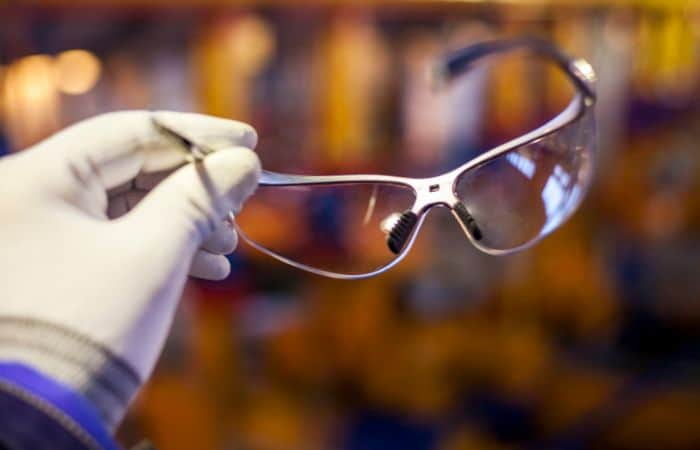
Different hazards require different types of safety glass lenses. For example, if you’re working with chemicals, you’ll need a lens that can resist chemical splashes.
Likewise, if you work in a tactical environment, you need a high-impact-resistant material that won’t shatter on impact from flying debris or projectiles.
Here are the usual materials used in safety glass lenses:
Polycarbonate
Polycarbonate is a lightweight plastic that’s impact-resistant and durable, making it excellent for sports and tactical applications, as well as for children’s glasses.
It’s used in all sorts of applications from bulletproof windows to riot shields, so it can definitely take a hit and keep you safe.
Polycarbonate has built-in UV protection, and is the standard lens used in most safety glasses. It’s also the most cost-effective, making it a popular choice for most consumers.
Trivex
A newer safety lens material, Trivex is similar to polycarbonate in that it’s lightweight and impact-resistant. However, it offers better optical clarity and is less likely to distort your vision.
It also has built-in UV protection, and is usually more expensive than polycarbonate.
Glass
Glass lenses have the highest optical clarity among all lens materials and are the most scratch-resistant. However, they’re also the heaviest and can shatter most easily.
For this reason, they’re not as common as polycarbonate in safety glasses. They’re best for environments where impact is not a concern, for example in a lab.
Plutonite™
This outer-space-sounding material is Oakley’s proprietary lens material made out of a high-grade, purified polycarbonate. Plutonite™ lenses are 100% UVA/UVB/UVC-blocking, and is shatter- and impact-resistant.
Safety Glasses Standards
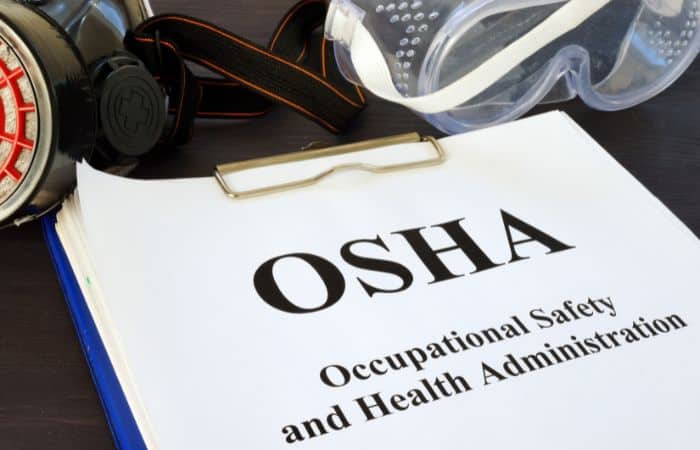
Now that you know what materials go into the production of safety eyewear, you should also understand the different agency ratings and standards that these glasses must meet.
This will help you pick the right pair of safety glasses for your needs.
Civilian and Industrial Safety Standards
ANSI Z87.1 is a set of civilian and industrial standards developed by the American National Standards Institute (ANSI) for the design and testing of personal eye and face protection devices.
All safety glasses sold in the United States must meet these standards and be marked with “Z87” (usually on the temple arm or lens) to be OSHA-approved.
There are different ratings that safety glasses can achieve under the ANSI Z87.1 standard. Each pair of safety glasses must be appropriately marked to indicate the level of protection:
Basic Impact Rating
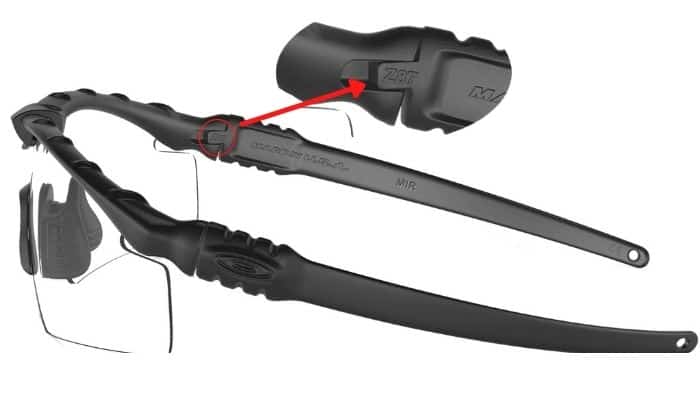
This is the minimum level of protection that all ANSI-rated safety glasses must provide, and should be marked “Z87”. This rating means that the glasses can withstand a direct hit from a steel ball dropped from 50 feet.
High-Velocity Impact Rating
This rating is more stringent, and indicates that the glasses can resist a direct hit from a larger, faster-moving object. This is the rating that most safety glasses intended for use in industrial and construction applications will have.
Safety glasses that meet this standard should be marked “Z87+”.
For more details about the testing process and additional markings, see here.
Military and Ballistic Safety Standards
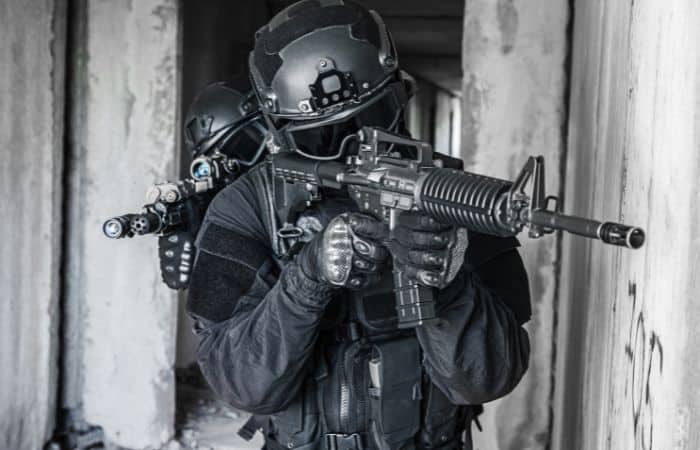
The MIL-PRF-31013 standard is a set of U.S. military specifications for ballistic eye protection, which is more stringent when it comes to impact-resistance.
This standard is often referred to as the “mil-spec” standard and is used by those serving in the armed forces and law enforcement .
Wiley X vs. Oakley Safety Glasses
All safety glasses that are designed for use in tactical and combat situations must meet this standard.
Ballistic safety glasses must be tested and certified to withstand a .15 caliber projectile traveling at 640 feet per second in order to meet the MIL-PRF-31013 impact standard.
Differences Between Safety Glasses and Regular Glasses
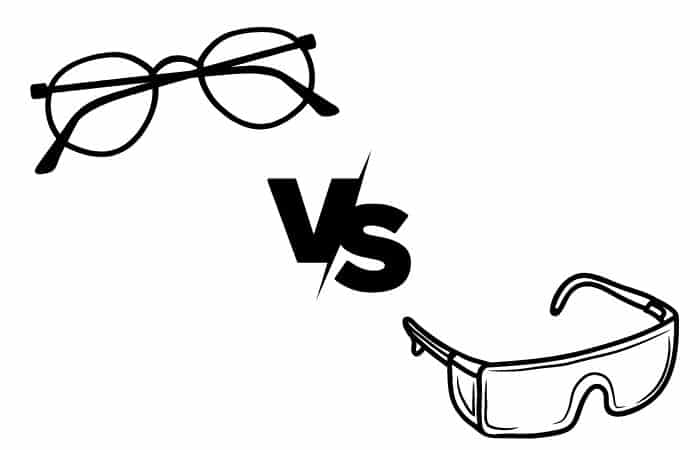
There are many characteristics that set safety glasses apart from regular glasses. Here are some of the most important differences:
Safety Glasses Must Be Impact-Resistant
To sufficiently protect your eyes from flying debris or fast-moving particles, safety glasses must be made of impact-resistant materials.
Regular glasses or sunglasses aren’t designed to withstand moving projectiles and can break easily, leaving your eyes vulnerable.
Safety Glasses Have Peripheral (Side) Protection
Standard eyeglasses don’t normally have any side protection, leaving your eyes open to getting hit from the sides. Most safety glasses are either built with wraparound lenses or side shields that protect your eyes from all angles.
Some safety glasses come with removable side shields so you can use them when you need the extra protection, and take them off when you don’t.
Wraparound safety glasses curve around your temples and hug your face more closely, providing a streamlined fit and good peripheral protection.
Safety Glasses Must Meet Certain Safety Standards To Be Acceptable For Specific Work Environments
If you use safety glasses at work, OSHA-approved PPE must be provided by your employer and be worn when necessary.
The ANSI-standard is the benchmark for safety glasses in the U.S. and is what most employers must use when selecting PPE for their workers.
ANSI-certified safety glasses must be marked with a “Z87” on the lens or frame to indicate that they meet the requirements for worker safety.
Standard eyeglasses are not built to ANSI-standards and therefore do not offer the same level of protection as safety glasses.
How Much Are Prescription Safety Glasses
FAQs
What Is The Strongest Frame Material For Safety Glasses?
Titanium is the strongest material used in safety glasses frames. Titanium is lightweight yet durable, and is also hypoallergenic and corrosion-resistant. However, most titanium safety glasses are thin and sleek in design, which may not be suitable for everyone.
Can I Get Prescription Safety Glasses?
Yes, many of the safety glass frames on the market can be fitted with prescription lenses. Most full-frame (i.e. not semi-rimless) pairs can usually be customized with prescription lenses to correct for distance or reading. You can also get bifocal or progressive lenses too.
Can Wearing Plastic Safety Glasses Damage Your Eyes?
No, there is no evidence to suggest that wearing plastic safety glasses can damage your eyesight. In fact, most safety glasses on the market use polycarbonate lenses, which are made of a type of plastic. Polycarbonate is lightweight, shatter-resistant, and provides excellent protection from UV rays.
What Material Are Shooting Glasses Made Of?
Most shooting glasses have polycarbonate lenses, which are shatter-resistant and provide excellent protection from UV rays. The frames of shooting glasses are usually made of lightweight metal such as titanium, or a sturdy plastic or nylon material.
What Material Are Sports Glasses Made Of?
Sports glasses are typically made of polycarbonate or an impact-resistant plastic. Polycarbonate lenses are shatter- and scratch-resistant, and provide built-in protection from UV rays. The temple tips and nose bridge are also usually coated with rubber to enhance grip and prevent your sports glasses from falling off when you sweat.



